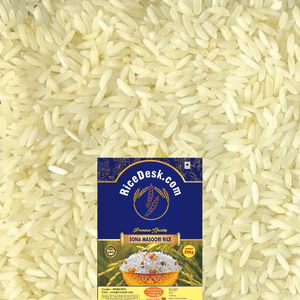
Sona Masoori Economical Rice
Steaming rice offers several advantages compared to other cooking methods. Here are some of the benefits of steaming rice:
Retains Nutrients: Steaming rice helps preserve its nutritional value. Unlike boiling, where some nutrients may leach into the cooking water, steaming allows the rice to cook in its own moisture, preventing nutrient loss.
Enhanced Texture: Steamed rice typically has a light and fluffy texture. The steam gently cooks the rice grains, resulting in a tender and evenly cooked dish.
Improved Digestibility: Steaming rice makes it easier to digest compared to other methods like boiling or frying. The gentle cooking process breaks down complex carbohydrates, making it more easily digestible for the body.
No Need for Oil or Fat: Steaming rice doesn't require the use of oil or fat, making it a healthier option. This can be beneficial for individuals watching their fat intake or those following specific dietary requirements.
Preserves Flavor: Steaming helps preserve the natural flavor of the rice. Since the grains are cooked with steam, there is minimal loss of taste or aroma, resulting in a more flavorful dish.
Versatility: Steamed rice can be easily paired with a wide range of dishes. Its neutral flavor makes it a versatile base for various cuisines and allows it to complement different flavors and ingredients.
Easy Preparation: Steaming rice is relatively simple and requires minimal effort. Once you have the right amount of water and rice ratio, you can set up the steaming process and let it cook without constant supervision.
Avoids Overcooking: Steaming rice reduces the risk of overcooking. Unlike boiling, where it's easy to end up with mushy or overcooked rice if not monitored closely, steaming allows for more precise control over the cooking process.
